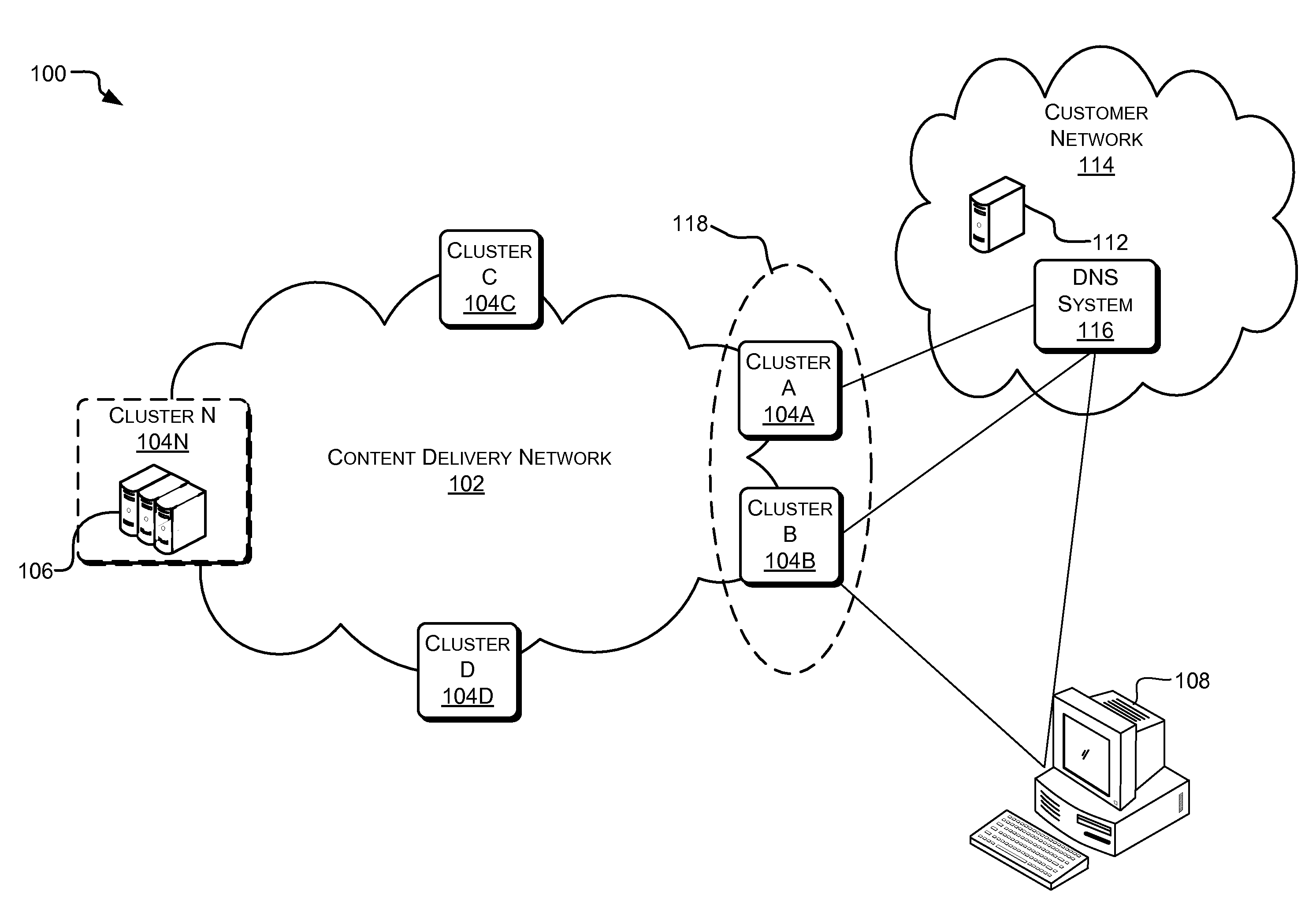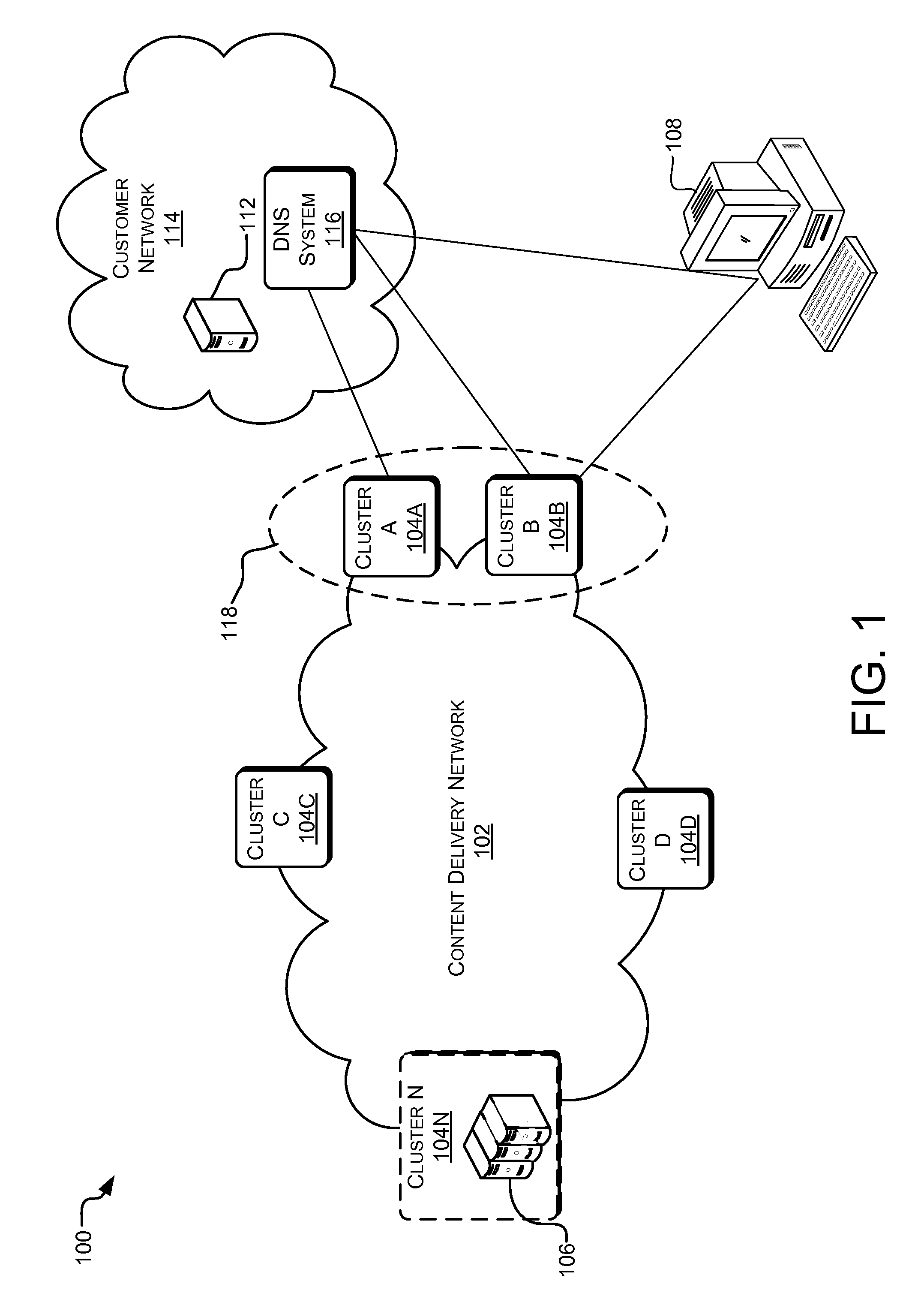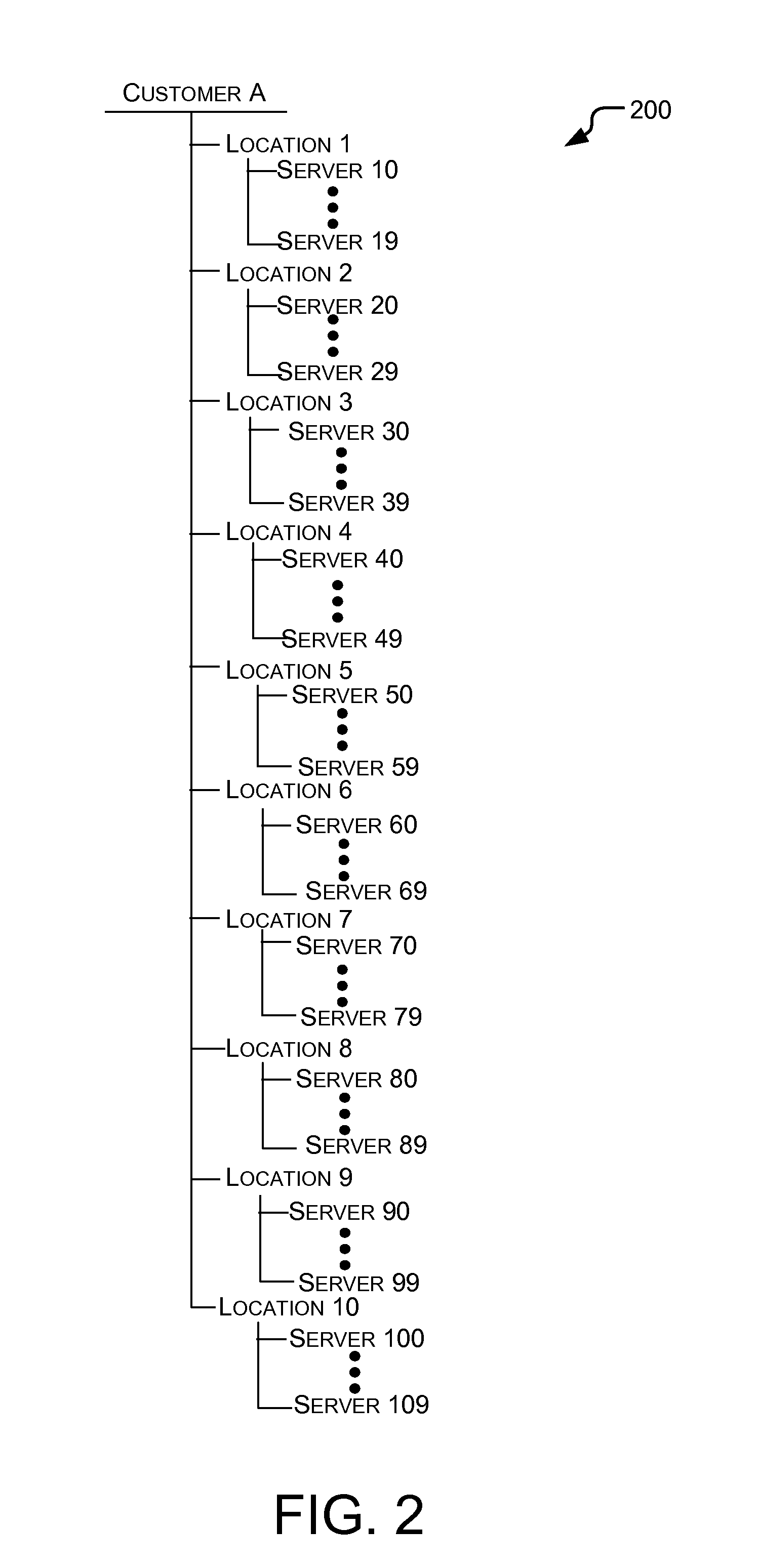Dynamic binding for use in content distribution
- Summary
- Abstract
- Description
- Claims
- Application Information
AI Technical Summary
Benefits of technology
Problems solved by technology
Method used
Image
Examples
Embodiment Construction
FIG. 1 illustrates an example network environment 100 suitable for implementing dynamic binding according to an embodiment. Binding refers to mapping of a content provider (e.g., content distribution network (CDN) customer) to one or more CDN servers or clusters. Dynamic binding refers to binding that adapts automatically as network metrics associated with the CDN customer's content or related traffic change. In the illustration of FIG. 1, a CDN 102 includes one or more server clusters 104. Each server cluster 104 includes one or more server computers or racks 106 (shown only in cluster 104N for ease of illustration) configured to respond to content requests from one or more user clients 108. A rack typically includes multiple servers (e.g., 24 servers).
In the illustrated embodiment, a content provider operates a customer network 114, which is a customer of the CDN 102. Content on a content provider server 112 can be propagated to the server clusters 104 in CDN 102 and, according to...
PUM
 Login to View More
Login to View More Abstract
Description
Claims
Application Information
 Login to View More
Login to View More - R&D
- Intellectual Property
- Life Sciences
- Materials
- Tech Scout
- Unparalleled Data Quality
- Higher Quality Content
- 60% Fewer Hallucinations
Browse by: Latest US Patents, China's latest patents, Technical Efficacy Thesaurus, Application Domain, Technology Topic, Popular Technical Reports.
© 2025 PatSnap. All rights reserved.Legal|Privacy policy|Modern Slavery Act Transparency Statement|Sitemap|About US| Contact US: help@patsnap.com



